New SERP Analyzer: Get a data-driven roadmap for creating new pages
Much work needs to be done if you want to create a high-performing page.
Creating a page blindly is a bad strategy because you should understand what kind of content needs to be produced, which keywords to use, and the minimum number of backlinks required to help your page gain traction.
That’s why most marketers tend to analyze the SERP landscape before creating a page around certain target keywords. To do this, you should perform deep SERP research, assess competitors’ strengths, and identify common SERP patterns. As a result, you’ll decide whether the top is reachable and, if so, how much effort it would take to get there. These valuable insights will help you create a high-quality page that can outperform your SERP competitors.
We at SE Ranking are excited to announce that we have rolled out our SERP Analyzer tool that shows top SERP players and all their significant metrics. Here, we want to provide you with a complete breakdown of this tool and its unique capabilities. Let’s go!
What does the tool do?
Like all search engines, SE Ranking’s SERP Analysis Tool shows a list of top-ranked pages for a particular keyword. But unlike the real SERP, this tool not only gives you snippets with their URLs, titles, and descriptions but also provides you with tons of insight on every SERP player.
The tool analyzes every SERP leader’s page against 110+ on-page and off-page parameters, defines average values for the analyzed SERP, and then scores every metric for every page against those average values. For example, if the X page has a 214-character description, while other pages in the same SERP have a shorter description meta tag, SERP Analyzer marks the value in red so that you can fix it.
All the analyzed metrics belong to one of the four groups:
- Page content and keyword density
- Page experience
- Backlinks and domain age & authority
- Internal and external linking
SE Ranking’s SERP Analyzer helps you to solve multiple tasks, including:
- Learning what pages occupy the top positions on the SERP
- Analyzing pages’ various SEO metrics in-depth to find valuable insights for you
- Understanding common patterns and identifying the main ranking factors for a certain SERP
- Finding out what kind of content top players offer, what structure their pages have and how well they are optimized
How to use the tool?
Well, now let’s see how to use the tool. To run a SERP analysis, just do the following steps:
- Select either desktop or mobile SERP to analyze.
- Choose the depth of analysis: the tool displays detailed insight on 3 to 50 SERP rivals.
- Select any country and region: from the USA to South Africa.
- Enter a keyword or keywords for which you want to see top-ranked pages.
- Finally, click the Start analysis button to get the SERP Report.
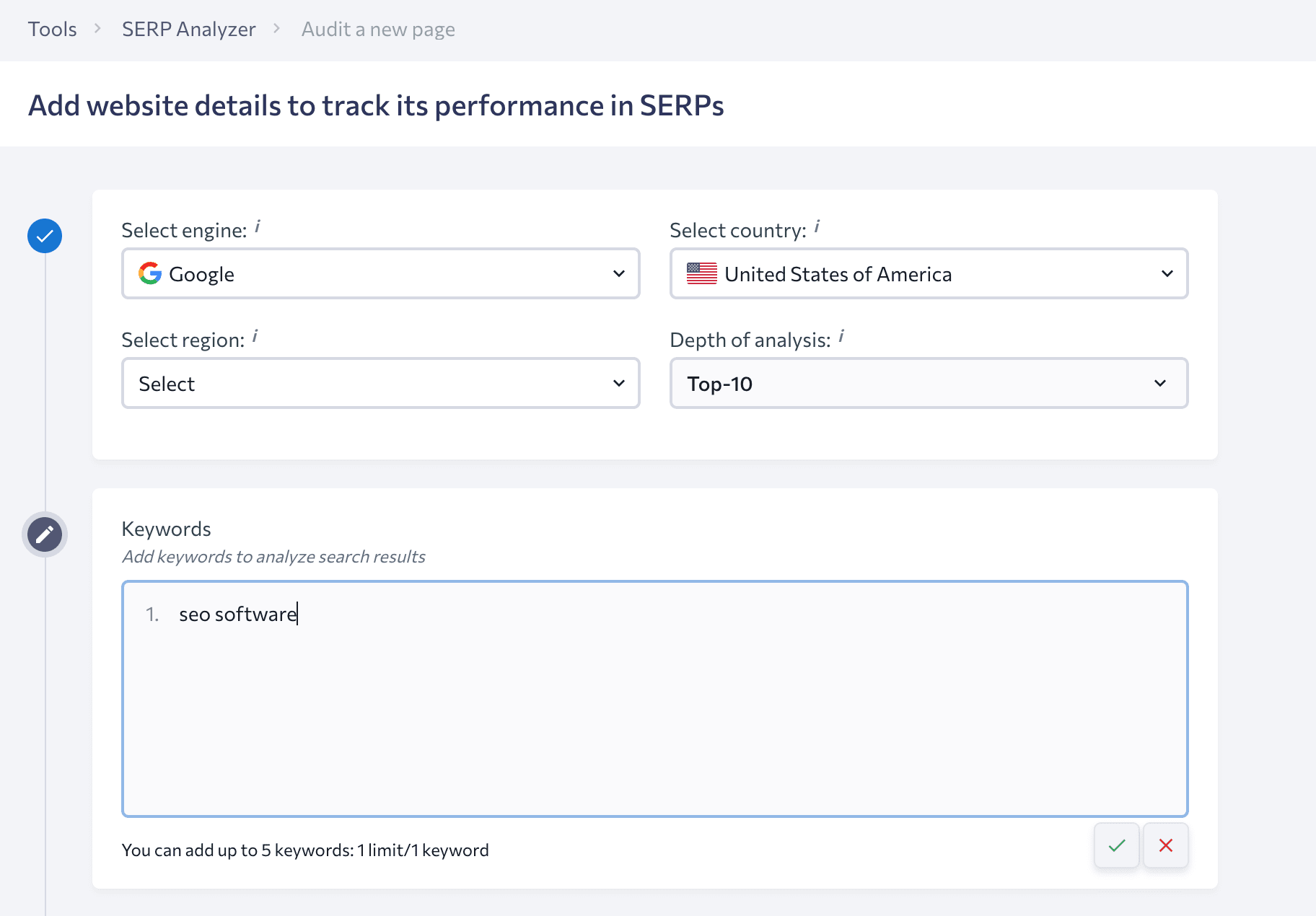
In the report, you’ll see most of the necessary data on top SERP players and all their major metrics on a single screen. Let’s dive into the features of each report module.
What data do you get?
Right at the top of the screen, there is a bar with the details you entered before. In the screenshot below, you can see that the tool provides data for May 30, 2022, this analysis is based on Google’s top 10 competitors’ research in the USA, and it’s a desktop SERP.
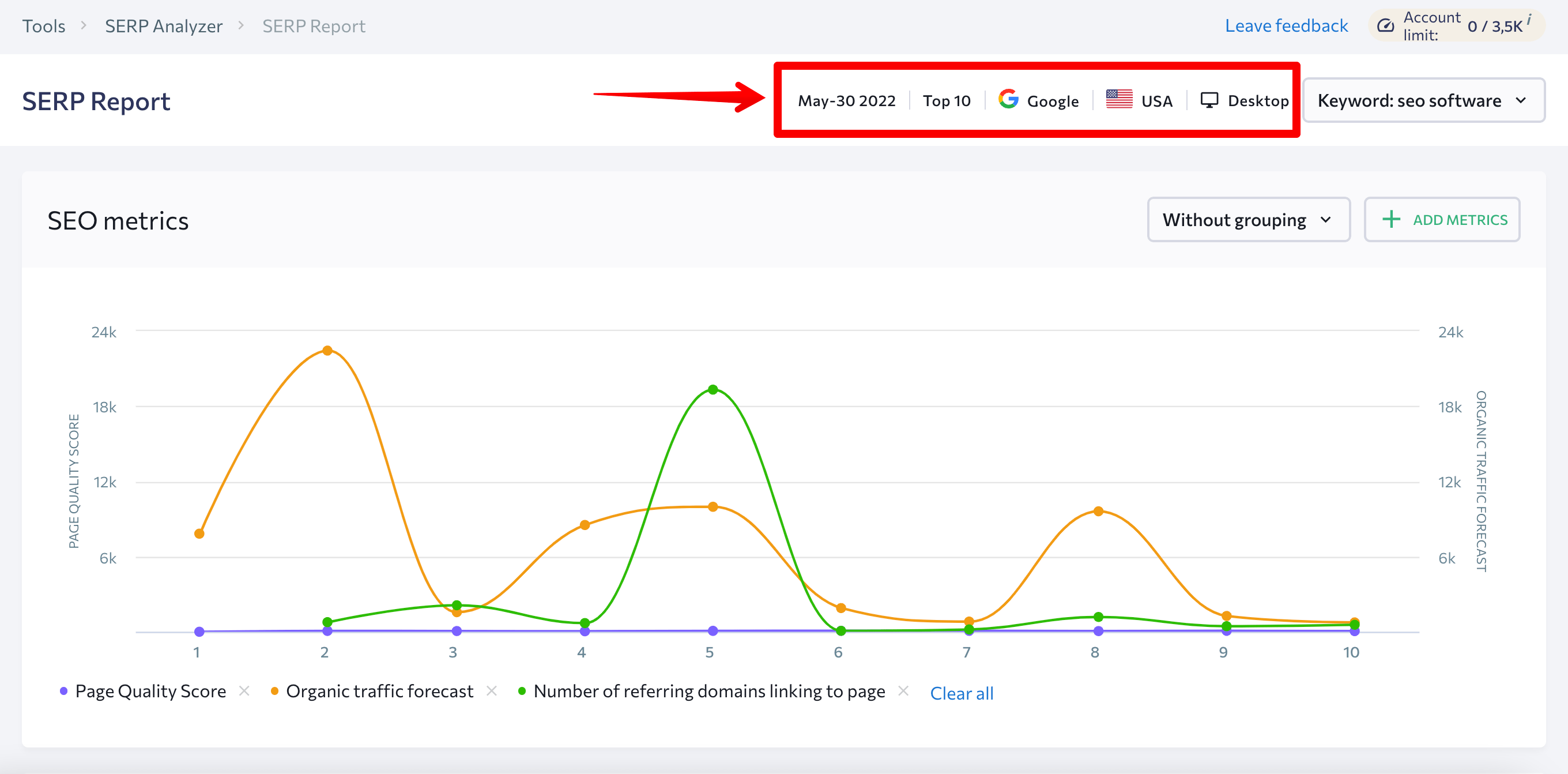
Here, you can also select a keyword for which the tool provides a report.
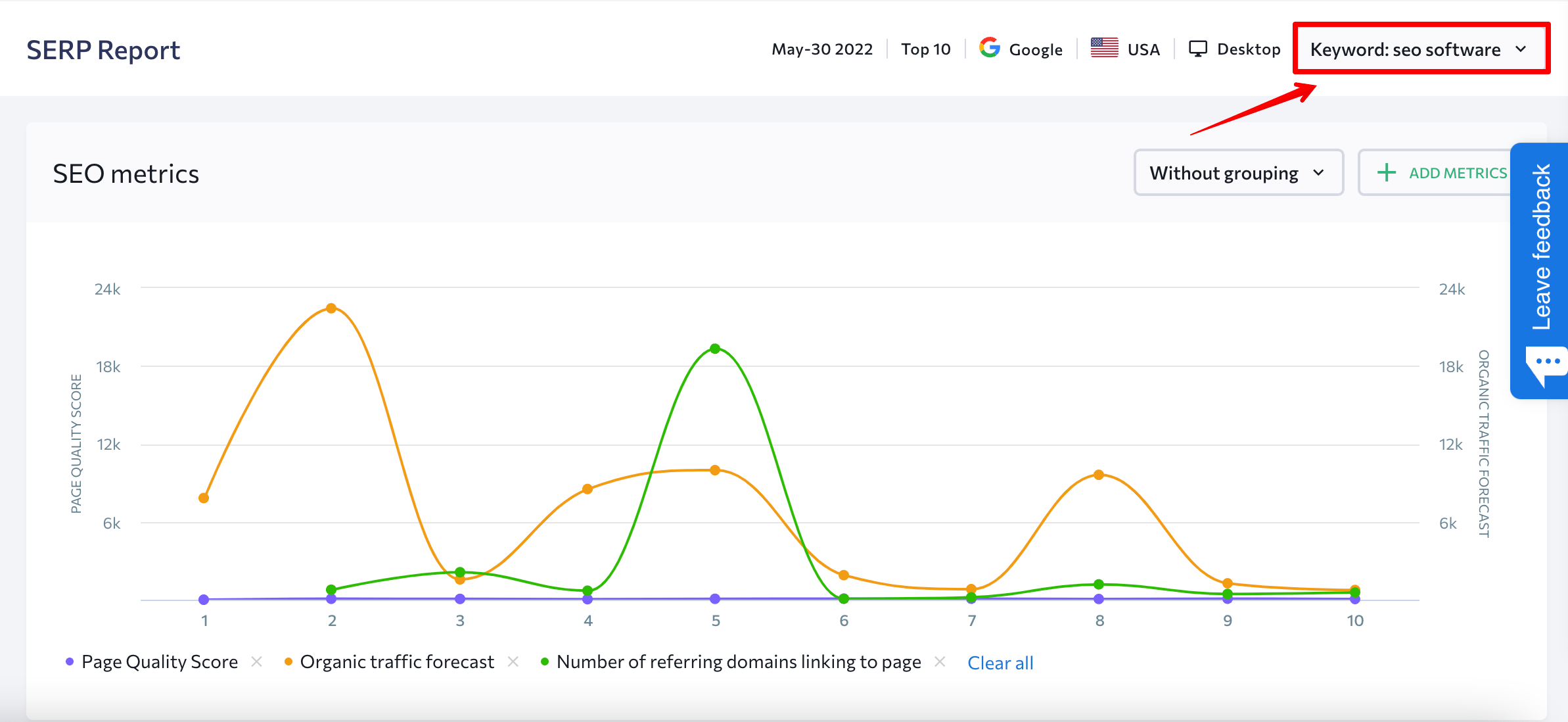
Besides, SERP Report features a chart containing various SEO metrics of all top-ranked pages (we’ll discuss this graph in detail a little bit later) as well as a table with the list of analyzed pages.
The table contains all the necessary data on each SERP player:
- Its position in search results for a particular keyword.
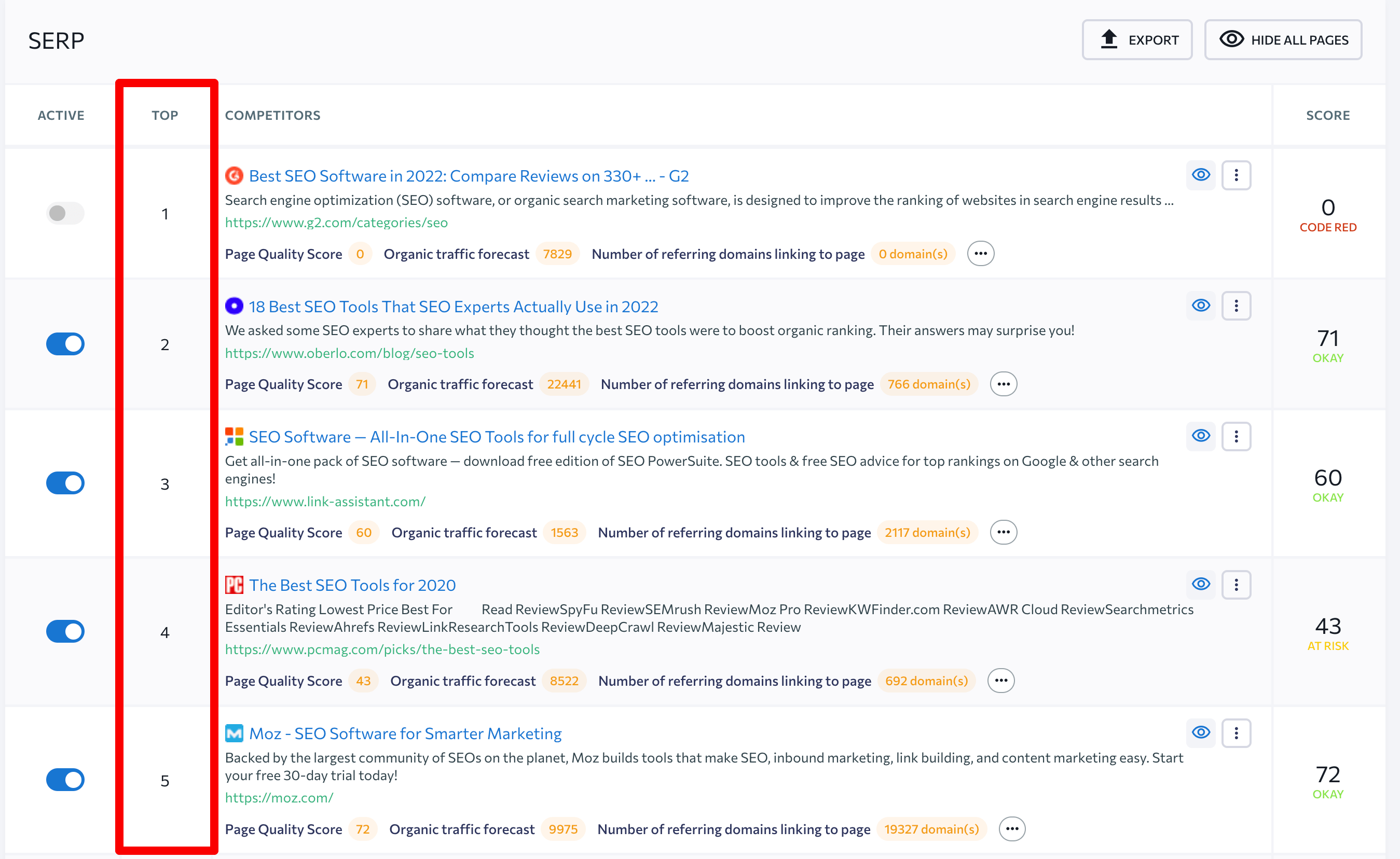
- The SERP snippet with a page title, description, and URL.

- All essential page parameters like organic traffic forecast, title, and description length, number of referring domains linking to a page, grammatical mistakes rate, domain age, etc. If you want to see all metrics the page has, press the button with three horizontal dots.
- Page structure: its title, description, and all headings. Just click three vertical dots to see a content breakdown.
- On-page score that evaluates the page quality based on keywords, content parameters, and technical metrics. The score depends on the number of issues found on the analyzed page and the weight of each issue.
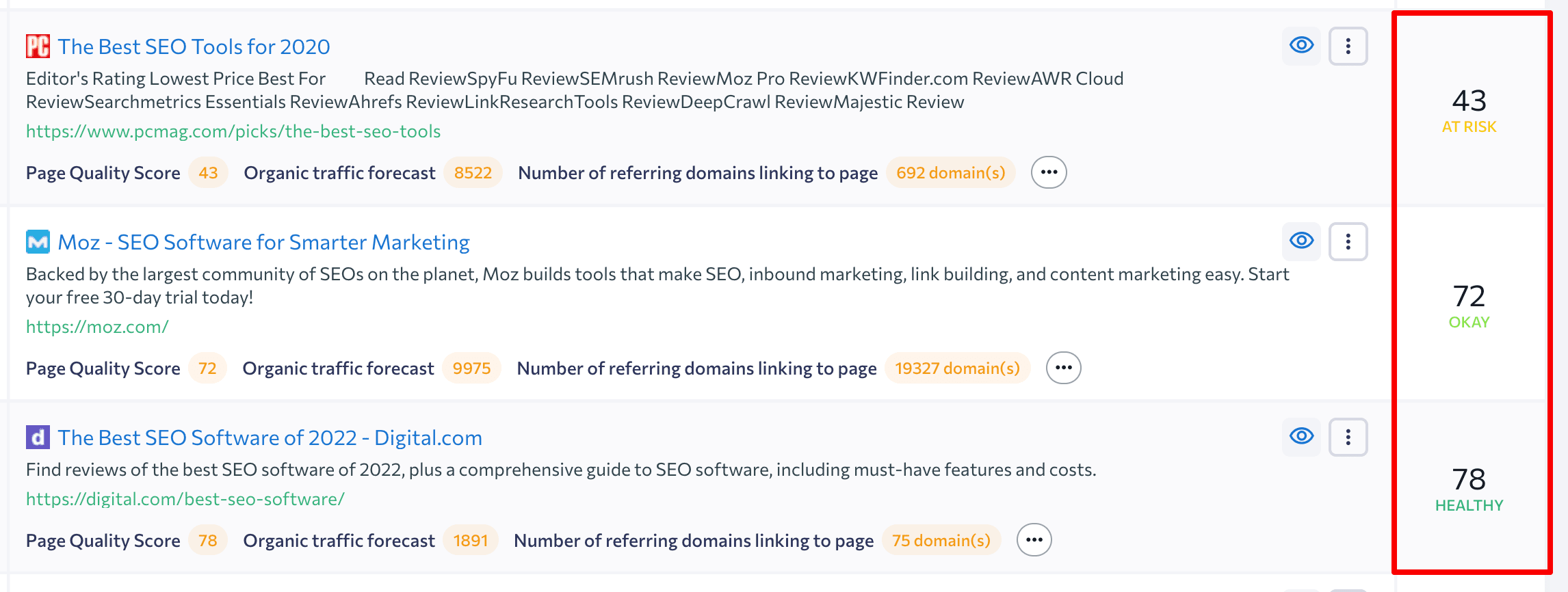
How to read the SERP Analyzer graph?
In addition to the table that lists all the URLs, SERP Analyzer features an easy-to-read graph. It’s meant to help users compare the top search results and find certain patterns. For example, you noticed that all top-ranking pages have a greater number of backlinks. This means that you should generate more backlinks to your website to outperform competitors.
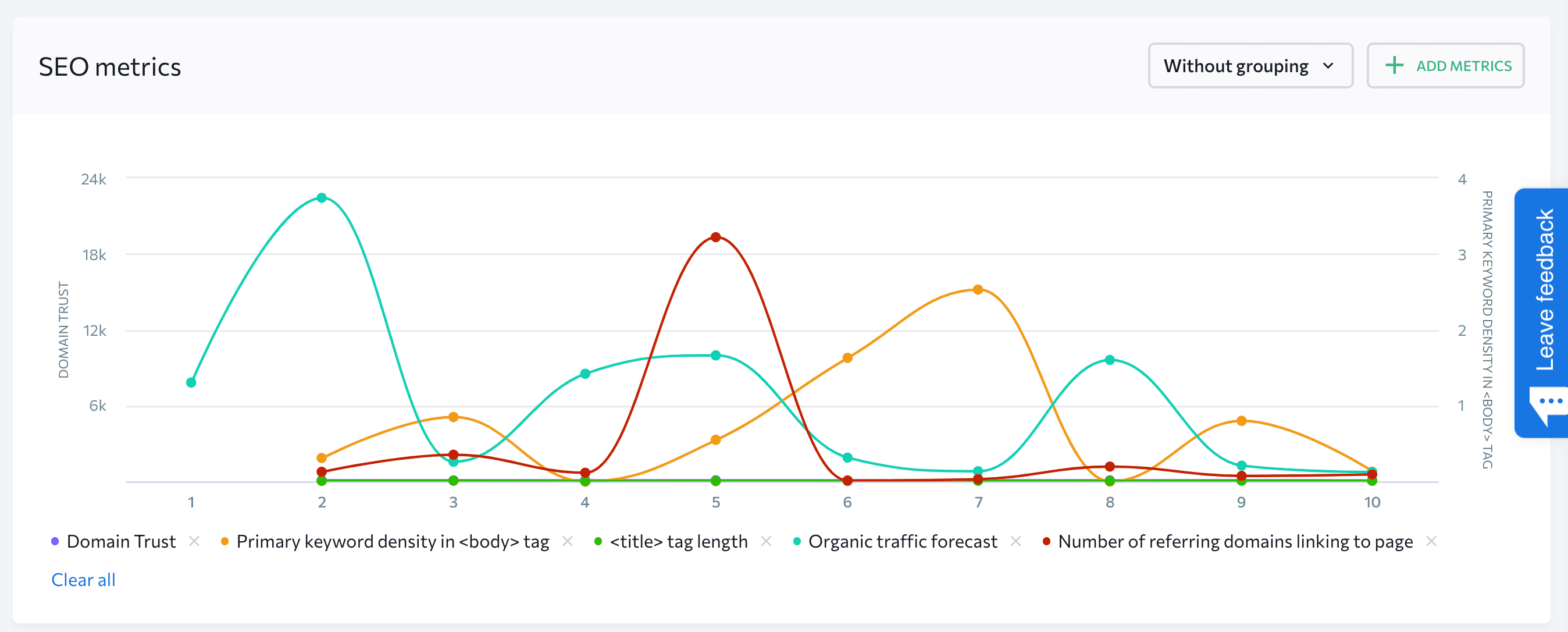
On the graph, you’ll see сomparison of different parameters every top-ranked page has. If you want to change parameters displayed on the graph, just push the Add metrics button. You’ll see all the metrics with checkboxes. Add parameters you want to analyze and easily remove unnecessary points.
Here, you can analyze individual pages or group data by 5/10 to get average values for the top 5/10/20. Just choose the option Grouping by.
Take a look at the screenshot: the tool grouped data by 5 so that you can compare the top 5 of search results to the pages that currently rank on the top 6-10. Here you can see that the top 5 pages, on average, have 4580 referring domains, while the top 6-10 search results have only 489 referring domains.
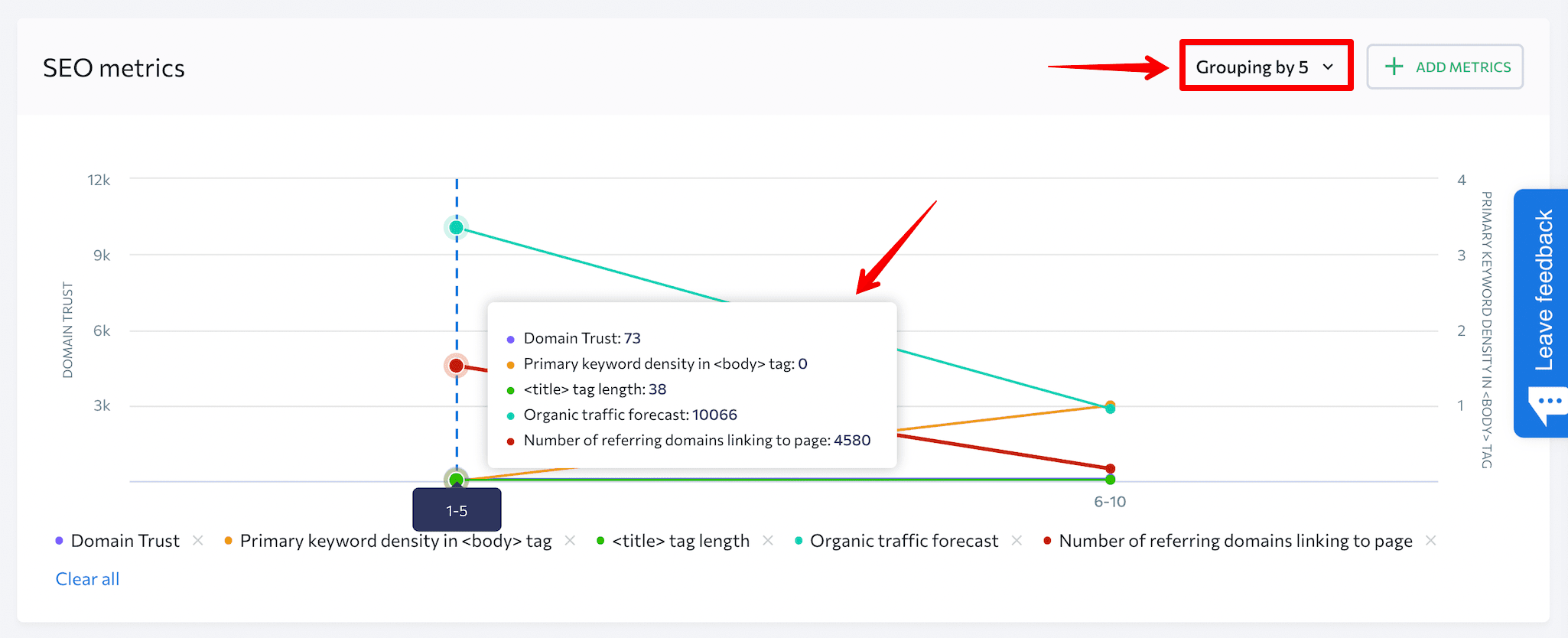
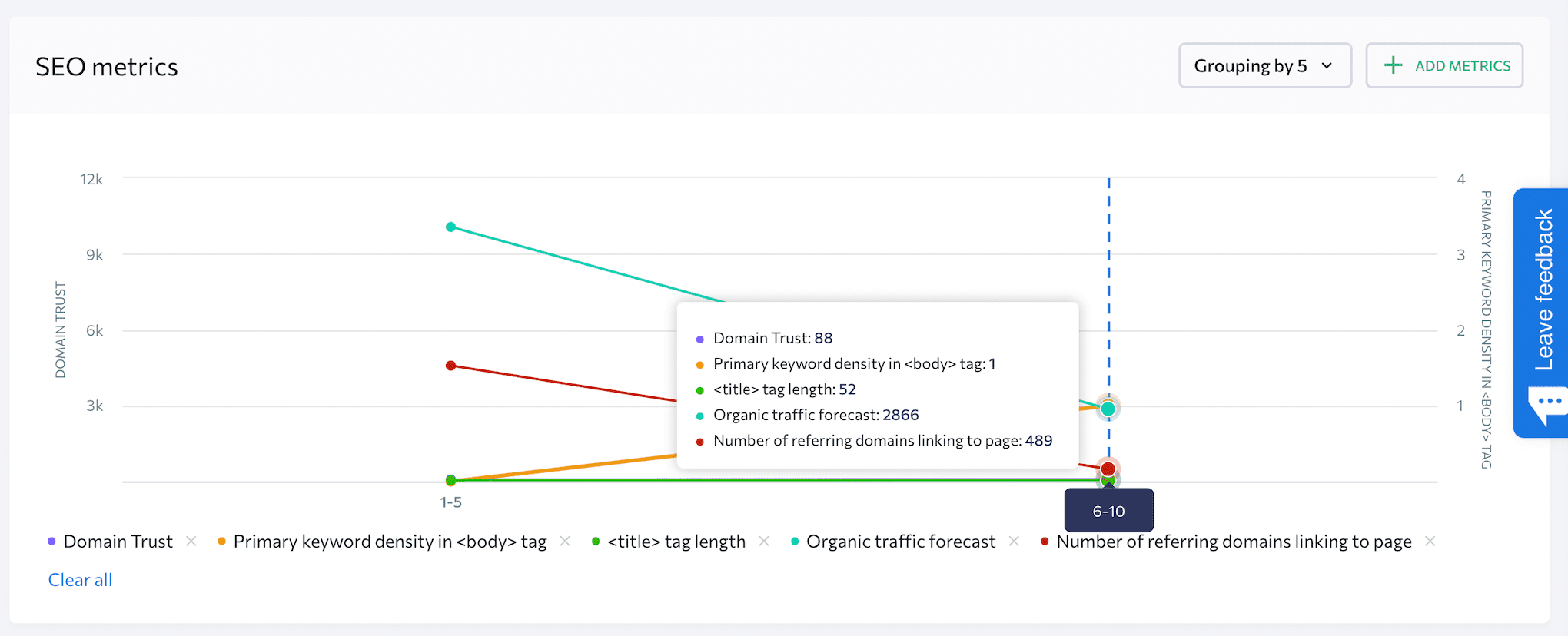
Moreover, you can hide particular pages from the chart to focus on analyzing only the most necessary pages—just click the show/hide button. These hidden pages can be displayed again if you press the button one more time.
Pay attention to the switch button—you can use it to make your SERP analysis more accurate. The toggle allows you to exclude a certain page from the calculations of the average parameter values—its metrics will not affect the SERP report. Let’s say you run an ecommerce store. With the help of the feature, you can exclude big players like Amazon or eBay (we suggest you do it during the launch of your project), and focus on smaller ecommerce sites like yours.
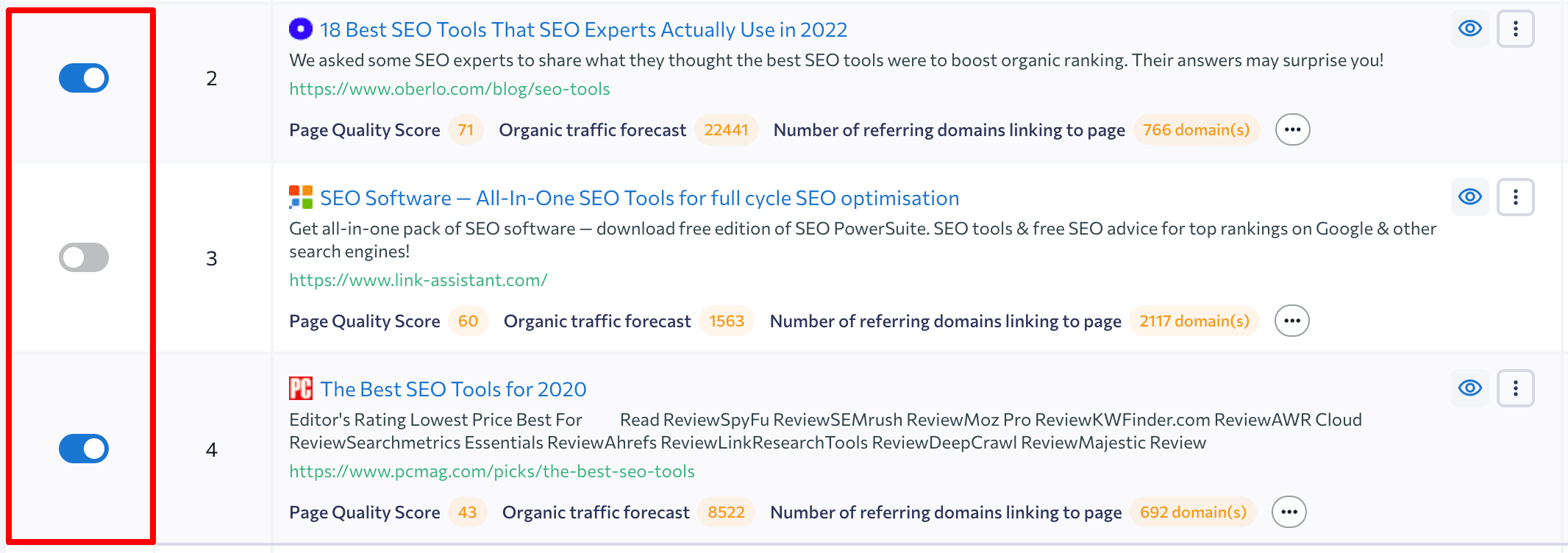
How SERP Analyzer can help you create a brief?
Now, you’ve got a bird’s-eye view of whom you’ll be competing against on the SERP. The next step is to dig deeper into your competitors’ content analysis and build a plan for creating a new high-performing page. To do this, use the Competitive Comparison and SEO Tasks sections.
The Competitive Comparison section allows you to analyze several competing pages side by side, drawing ideas for your future page—its structure, text, and keywords. Moreover, this tool differentiates between primary and secondary content—you can see where every term was found: title, URL, product description, etc. The tool provides data on how many times a particular term was mentioned on the page; it will help you balance keyword density.
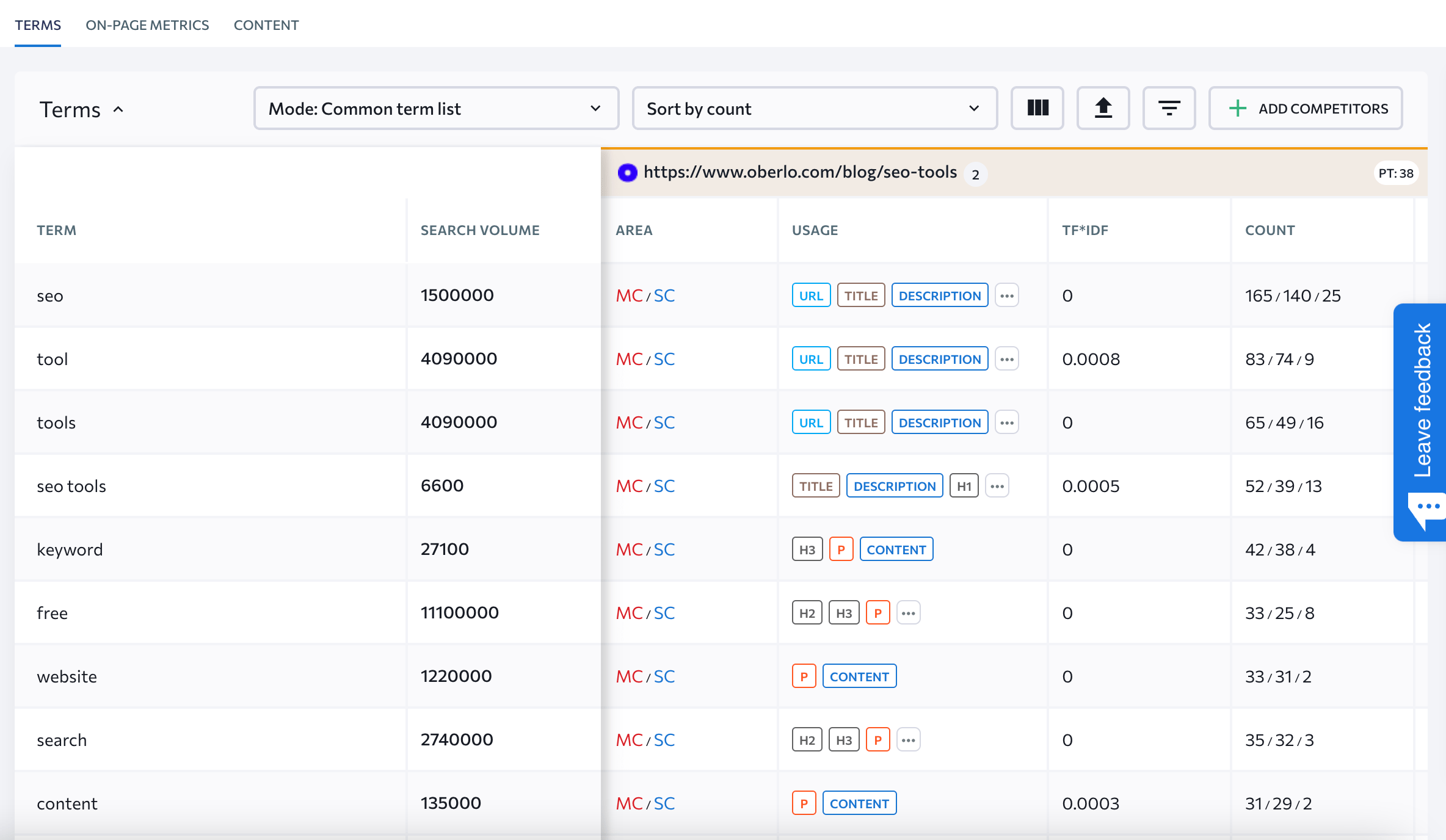
What is more, you’ll be able to check 30+ parameters of competitor’s pages side-by-side: e.g., <title> tag length, number of words on a page, Domain Trust, number of external and internal links, etc.
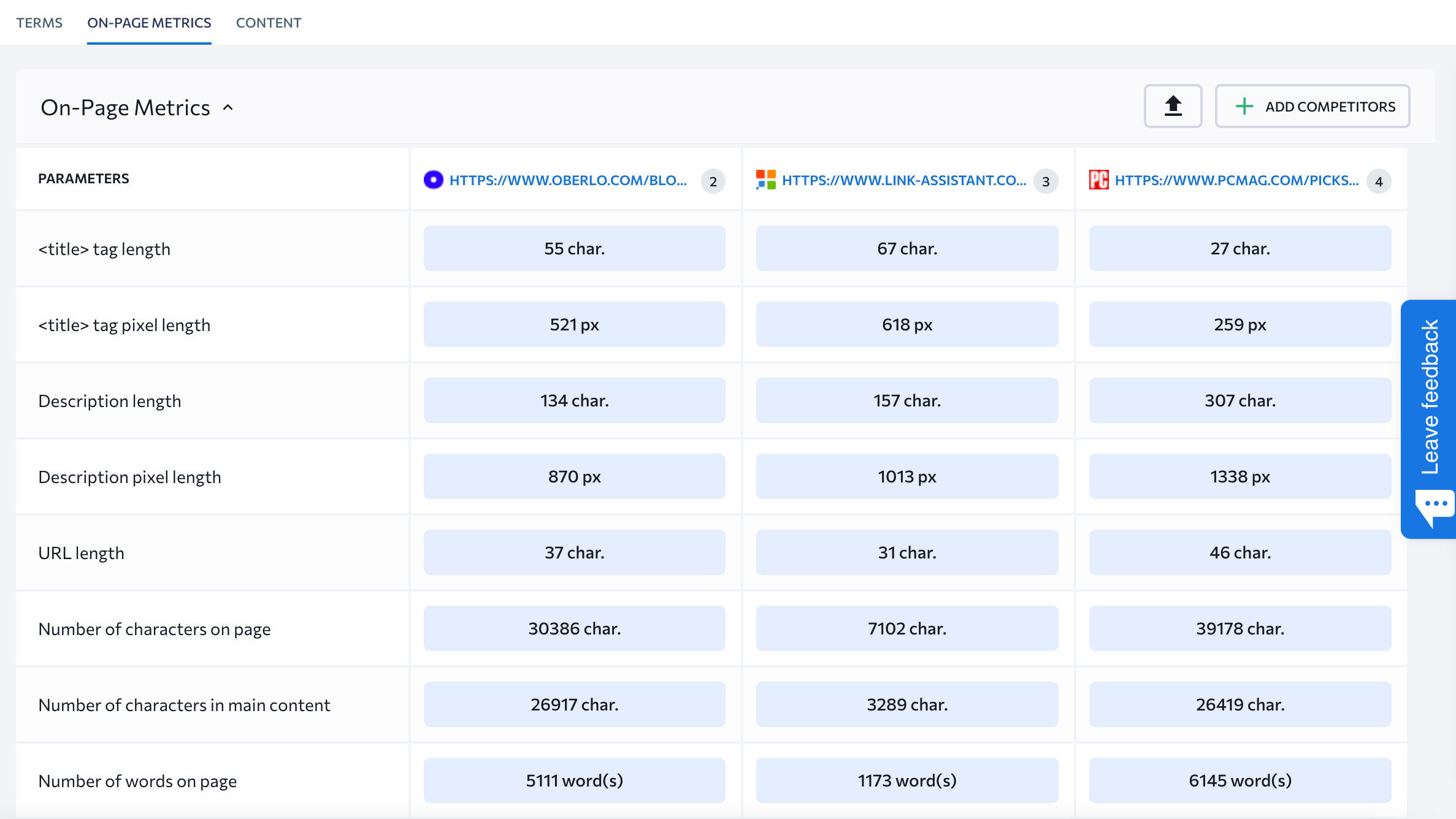
On the Content tab is a detailed comparison of competitors’ content, including titles, descriptions, and headings.
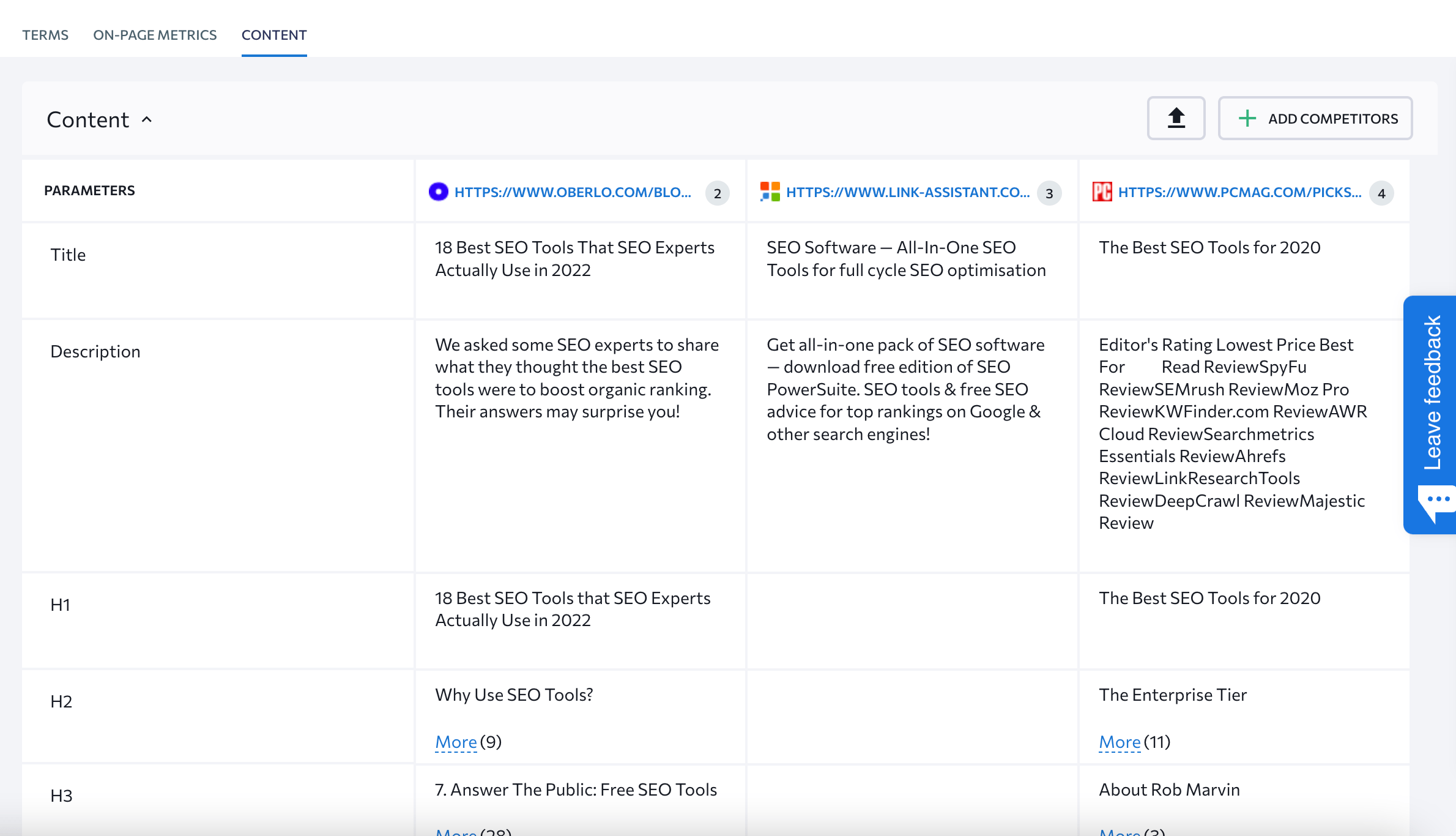
Here, you can take ideas for your content, page structure, terms, etc.
Then, this valuable competitive comparison data could be combined with SEO tasks you can find in the next section. It’s a to-do list with all the issues and suggestions from the report arranged by their importance. You can customize this list by changing priority, removing tasks, and adding new ones.
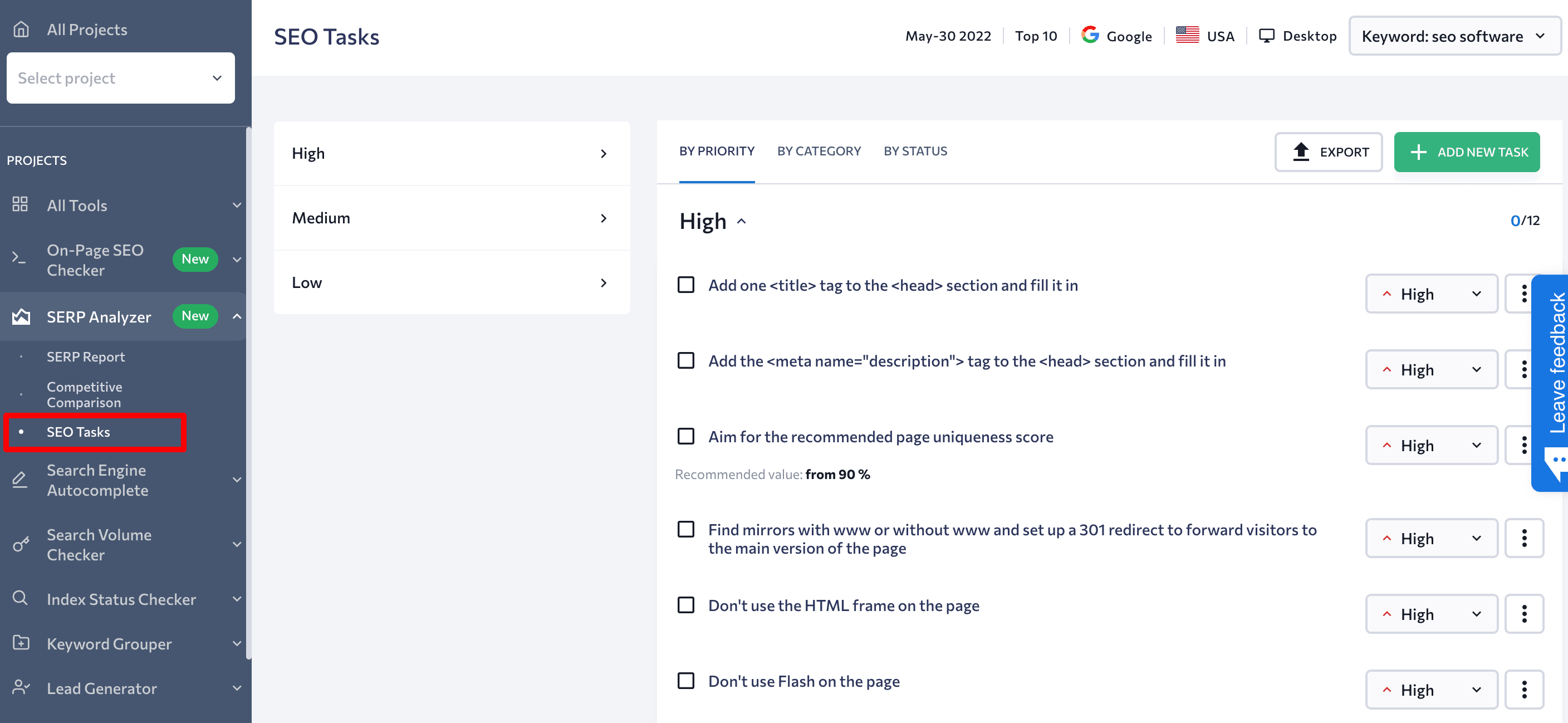
These recommendations and data can help you create well-thought-out briefs for webmasters or content writers. Thus, the tool will save your valuable time on creating a high-quality page from scratch.
What makes SERP Analyzer unique?
Now that we’ve looked at what the tool can do and how it can help you create a high-performing page, we want to highlight several distinctive capabilities of the SERP Analyzer that make it stand out from other similar solutions.
- This tool allows you to define which ranking factors matter for your target SERP. Instead of creating new pages blindly, you can focus on crucial parameters that directly impact rankings and traffic. See what your rivals are doing and use their best practices while creating your own page. For example, if all top-ranked pages have long titles that are more common for desktop users, you should follow this example and do the same thing.
- SERP Analyzer offers all the key data about the SERP leaders on a single screen. Historically, all the necessary information for comprehensive analysis would be gathered from multiple sources, like keyword research and content tools, backlink checker, etc. But now it’s all in one place. Easy-to-read dashboards and well-designed sections will help you quickly get a birds-eye view of the SERP landscape without switching between tools and copying data to spreadsheets.
- The tool is available for any language and location. By adding details for a new audit, you can specify the exact region of a country. Just start typing city, town, state, or region, and the tool gives you a suggestion, as you can see in the screenshot below.
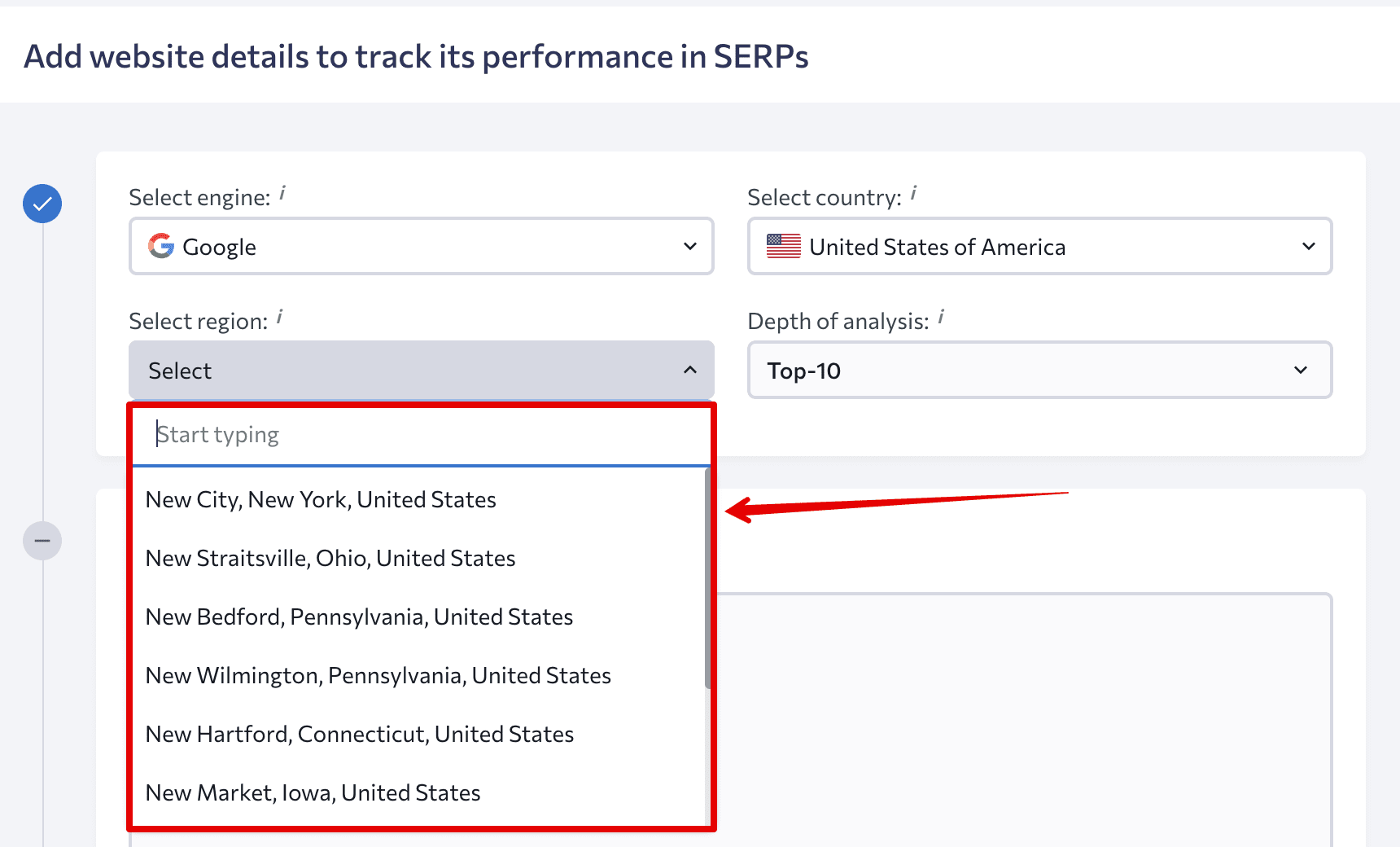
- The tool has flexible settings. For example:
- You can choose the number of competitor’s pages to analyze: from 3 to 50 search results.
- The tool allows you to group data (we talked about this option in the previous section). Moreover, you can analyze every page individually on a graph.
- You can select any combination of metrics on the graph and switch off irrelevant pages.
All these features will help you make your SERP analysis more accurate.
How to get the most out of SERP Analyzer with preliminary keyword research?
All right, we’ve described the benefits of our new tool. But we want to focus on one important point.
Before you run a SERP analysis, we recommend you take advantage of SE Ranking’s Keyword Research. Why is this step critical?
Keyword Research is a place where you can go having little to no idea on which keywords exactly you want to target. Paste a seed keyword—and the tool will come up with plenty of keyword ideas. You’ll see similar, related, and low-search volume terms.
You can start analyzing if the keyword is a worthy one by paying attention to such metrics as search volume and keyword difficulty, examining the SERP features, and checking the list of top 10 players.
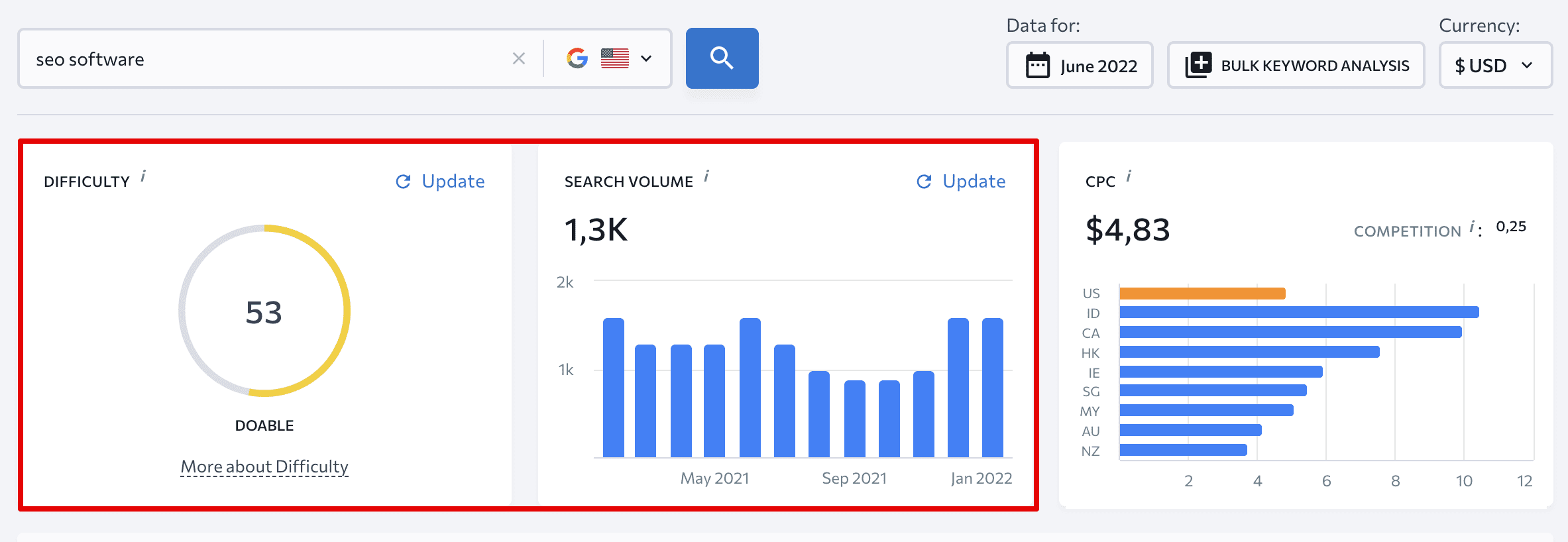
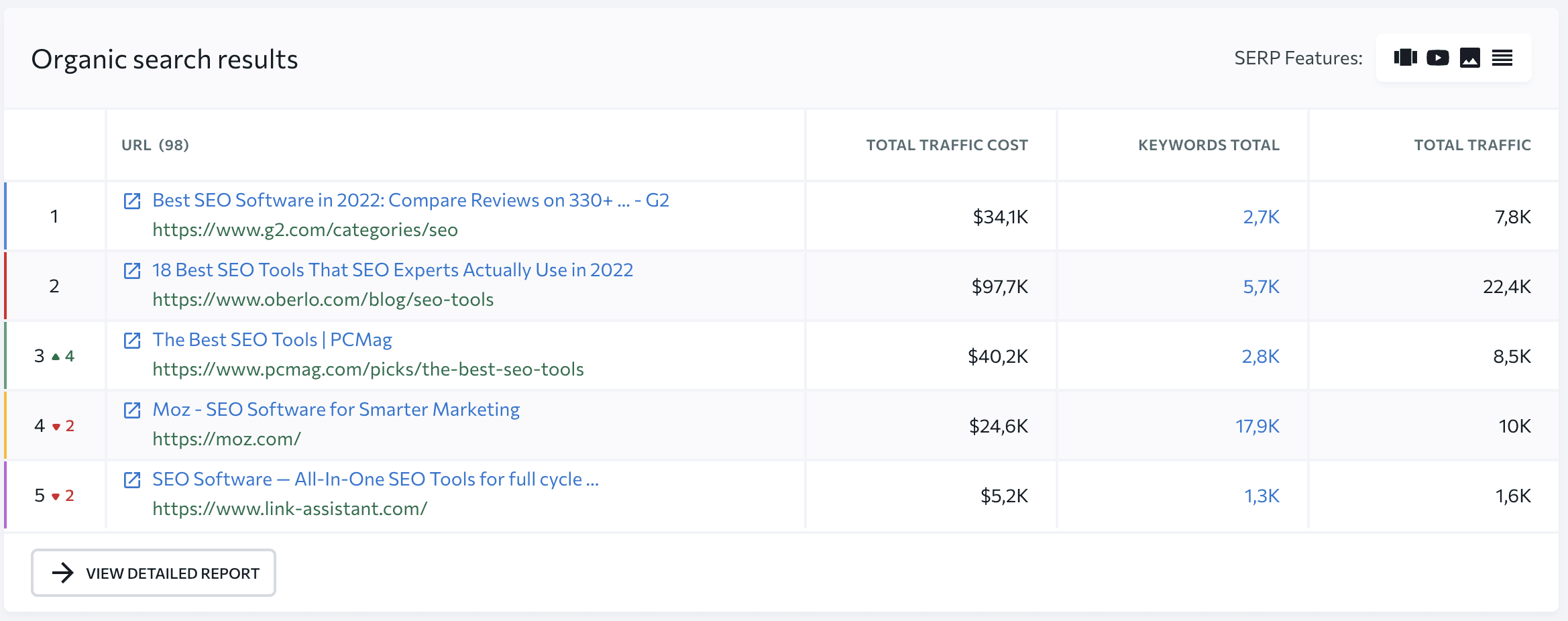
As you can see in the screenshot, this tool provides basic page metrics, such as the amount of traffic and the number of keywords the page ranks for.
Don’t forget to visit the Organic SERP History section, where you can check how stable the SERP is for a certain keyword and how the top players have changed over time.
So, with Keyword Research, you can find promising keywords for your new pages. And the SERP Analyzer allows you to go much deeper when analyzing the SERP leaders, providing information on their strengths and weaknesses. As a result, you’ll understand what you need to do to climb the SERP ladder.
Try it now
We’ve shared all the benefits of our new tool. Now the ball is in your court. Want to try it? Go to the SERP Analyzer tool on the SE Ranking platform.
If you’re not using SE Ranking yet, check out our 14-day free trial and explore all the tools we have to offer within our all-in-one SEO platform!
We hope you will find this new tool very useful and are looking forward to hearing your thoughts! Let us know in the comments what we can do to make it even better 😉
P. S. If you already have a web page and want it to rank at the top of the search results, try our On-Page SEO Checker. Here, you can learn how your pages are seen by search engines, get them ready for human visitors, and learn how they measure against your competitors.

